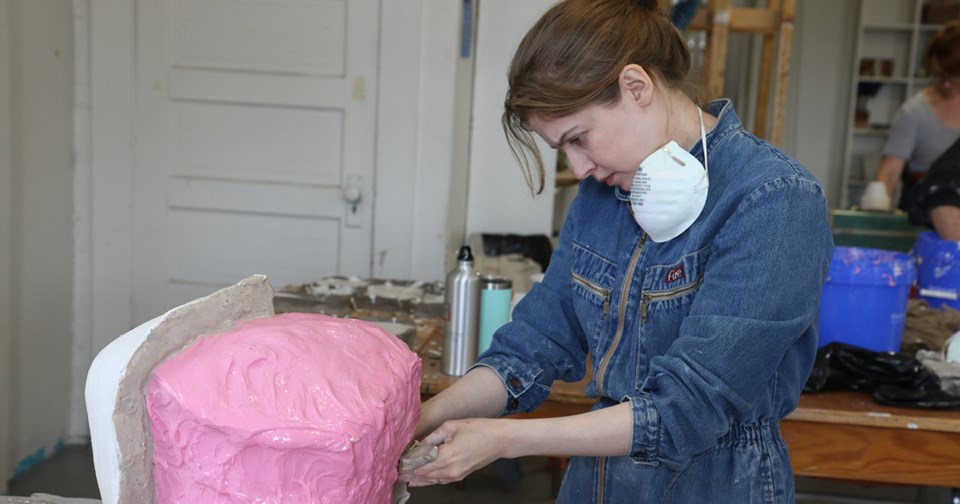MUENSTER — A sculptor that got her start in the Humboldt area came back home to teach others about her craft.
Heather Benning taught a sculpting and mould making workshop at St. Peter’s College from July 25 to 28 that was hosted by CARFAC Saskatchewan, a non-profit organization representing visual artists in the province.
Since last September, Benning has served as a traveling mentor for the arts organization.
“I've always made art,” she said. “I was really lucky with growing up on the farm, there was a lot of extra space on our farm. My father and mother donated the hayloft of the barn for me to use.”
Benning went to St. Dominic School and Humboldt Collegiate. During a year off after high school, she visited England, where she decided to pursue art academically. She went to St. Peter’s College and the University of Regina before moving to Halifax to get an undergraduate degree at the Nova Scotia College of Art and Design.
The sculptor then worked on projects all over the province, including one near Marysburg.
“It was a 24-foot woman built within the confines of an abandoned farmhouse. She had her head on the roof, her body was built within the house, and her arm came out one of the windows and she faced south towards the field,” she said.
The project was completed in 2004. The house was destroyed in 2011 by vandals.
“The purpose of that project was to be there as long as the house was there, and then she would go down with the house.”
Then, Benning went to Scotland to compete her masters at Edinburgh College of Arts. She stayed in the country for five years, working at a bronze foundry for two of those years.
After that, she came back to Saskatchewan, working with her father on the farm and maintaining a dedicated studio. Last year she moved to Swift Current to work as the curator and education co-ordinator at the local art gallery.
The workshop began with the eight students creating an original sculpture. When that was done, the students learned how to make a silicone mould, with a plaster mother mould surrounding it. The moulds are then cut in such a way it creates a sort of 3-D puzzle that can be assembled or disassembled. Then plastic or acrylic resin is placed within the mould.
“This is also the type of process that eventually can lead to bronze casting,” Benning said. “Rather than just making a one-off, you can make multiples, you can cast in different materials like resins, plastics, waxes, and eventually bronze.”
At the end of the day, Benning said it’s important for artists to work with their hands.
“It's important for artists to be able to learn other techniques to create new ways of thinking and new forms of artwork.”
As a traveling mentor, Benning has been visiting studio across the province, giving artists advice on items like exhibitions, or giving general critiques.
“As a rural artist, you oftentimes do feel quite isolated, you don't necessarily get the opportunity to have curators come directly to your studio,” she said. “The curator often prefers you to go to them and so this was a way to sort of create a larger community of artists who have suffered from isolation.”
This is the first year CARFAC Saskatchewan has had the program, which is funded by the Saskatchewan Arts Board and SaskCulture.



